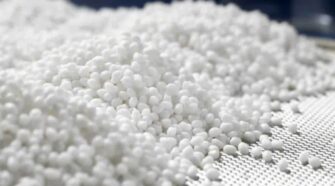Sustainability

Executive Q&A: Pioneering the Future
India-Based Birla Cellulose is Leading the Industry with Sustainable Options and Innovation India-based Birla Cellulose is the recipient of the “Dark Green Shirt” ranking in Canopy’s Hot Button Report for …

Cellulose Fibers and Nonwovens
Approaches to Responsible Sourcing As a leader in wood-based cellulosic fibers, Lenzing has a particular responsibility and ambition to help raise the bar for sustainability in nonwovens industry. Wood and …

Technological Trends for Bio-Based Nonwovens
Solutions to Environmental Impacts of Current Materials Today, the world’s nonwoven production is dominated by petroleum-based resins, most prominently polypropylene (PP) and polyethylene terephthalate (PET). But bio-based materials have also …

Regulatory Pressures & Significant Threats to Industry
Exploring the Challenges and Opportunities Facing the Industry in Light of a Growing Consumer and Policymaker Focus on Sustainability Sustainability topics are top of mind for virtually every industry across …

The Potential and Trends of PCR in Nonwovens
Q+A With Matt Seaholm, President & CEO and Patrick Krieger, Vice President, Sustainability, Plastics Industry Association The nonwovens industry faces a huge challenge to transition from non-sustainable product applications to …

